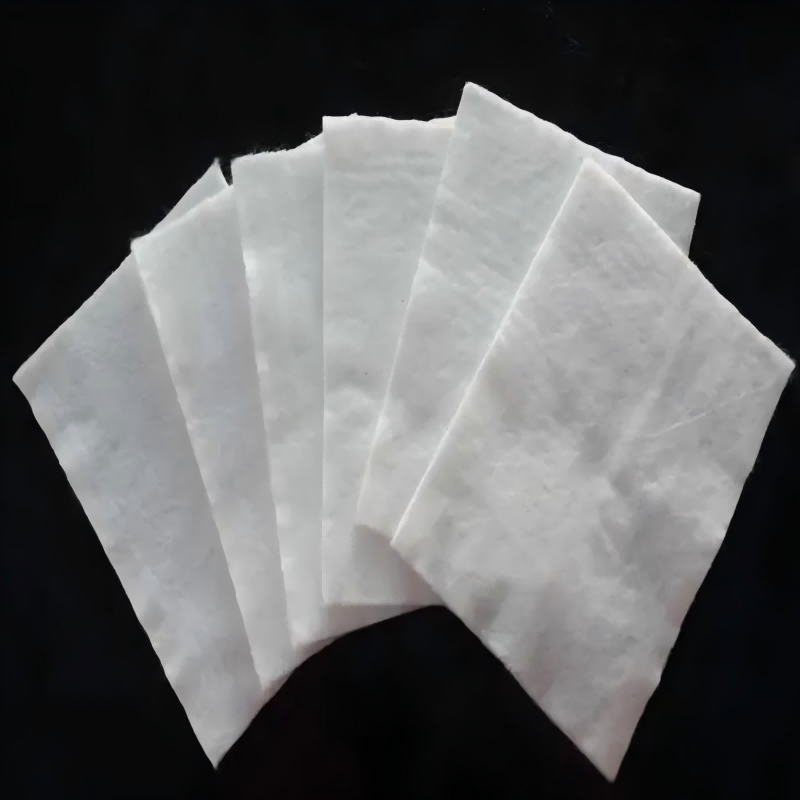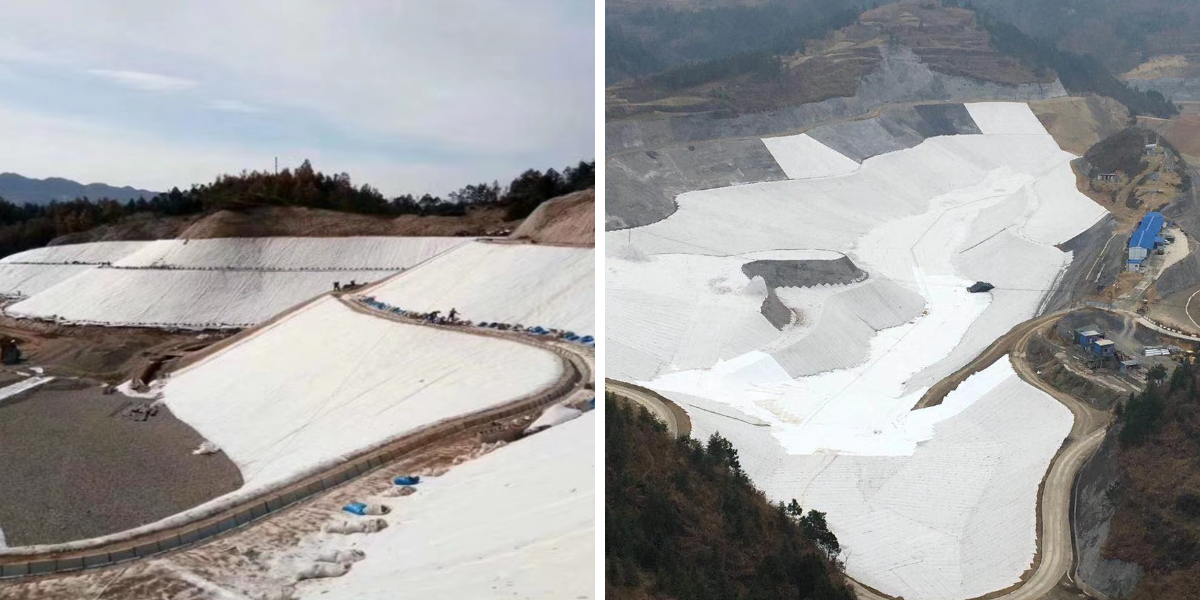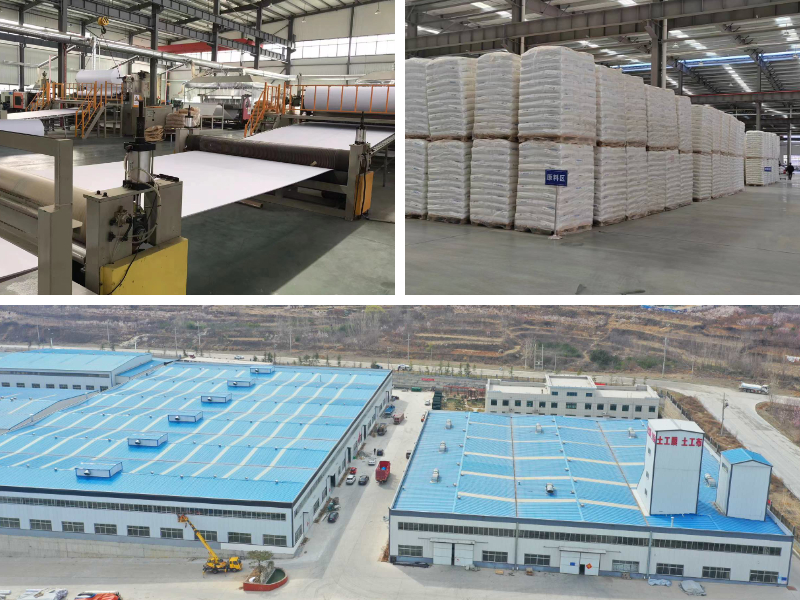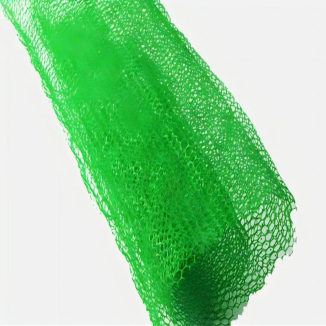Geotextile Fabric for Seawalls
1. Integration of functions and reduction of processes: Traditional engineering requires the combination of "sand and gravel filtration layer+geomembrane anti-seepage layer+steel reinforcement layer" to achieve functions, while geotextiles can be implemented individually or in combination.
2. Lightweight design to reduce engineering load: The unit weight of geotextile is only 100-1000g/m ², significantly reducing the bearing pressure of the foundation and avoiding the risk of foundation settlement.
3. Controllable cost and excellent long-term economy: Although the unit price of geotextile is higher than that of materials such as burlap, the full cycle cost of "material procurement+transportation+construction+maintenance" is 15% -25% lower than that of traditional materials.
4. Environmentally friendly: Geotextile raw materials are mostly recyclable synthetic fibers, some products are biodegradable, and the construction process is dust-free and noise free, reducing pollution to surrounding soil and water bodies.
Product Introduction:
Geotextile Fabric for Seawalls refers to a permeable sheet-like geotextile made mainly from synthetic fibers such as polypropylene (PP), polyester (PET), nylon (PA), etc., processed through processes such as needle punching, weaving, thermal bonding, and spunbonding. It is different from traditional textile fabrics, with the core design goal of adapting to the needs of civil engineering for "material soil/water interaction", combining "mechanical performance" and "hydrological performance", and serving as a key medium connecting building structures with natural soil.
From the essence of materials, geotextiles can be divided into two categories: non-woven geotextiles and woven geotextiles. Non woven geotextiles form porous structures through random interweaving of fibers, focusing on filtration and drainage; Woven/woven geotextiles form high-strength structures through regular interweaving of fibers, with a focus on reinforcement and isolation.
Feature
The characteristics of geotextiles revolve around "adapting to complex environments in civil engineering" and can be summarized into four categories: "mechanical stability, environmental tolerance, hydrological controllability, and convenient construction":
1. Stable mechanical properties: Made of high-strength synthetic fibers, it can maintain excellent tensile strength (conventional products can reach a tensile strength of 10-50kN/m) and elongation at break (10% -30%) in both dry and wet conditions, and is not easily torn by soil deformation or external impact. It can withstand soil loads for a long time.
2. Strong environmental tolerance:
Corrosion resistance: It has good resistance to acidic and alkaline soils (pH 3-11), industrial wastewater, seawater, etc., and will not degrade or weaken due to chemical erosion;
Aging resistance: after adding anti ultraviolet (UV) additives, it can be used in the open air for 5-10 years without aging. If it is buried in the soil or combined with the protective layer, the service life can reach more than 20 years;
Anti biological damage: not decomposed by microorganisms, not bitten by insects and mice, avoiding damage to material structure due to biological activities.
3. Controllable hydrological performance:
Adjustable permeability: By controlling the fiber porosity through the process (conventional non-woven geotextile porosity of 50% -80%), the filtration effect of "allowing water/gas to pass through while intercepting soil particles" can be achieved, or directional drainage channels can be formed;
Stable filtration accuracy: The pore size is uniform (commonly equivalent pore size 0.05-0.5mm), which can accurately intercept fine soil particles, prevent soil loss, and avoid pore blockage.
4. Good construction adaptability: The material is lightweight (with a unit area mass of 100-1000g/m ²), has strong flexibility, can be folded and transported in rolls (with a width of up to 4-9 meters and a length of 50-100 meters per roll), and can fit irregular terrain (such as slopes and potholes) during laying. It does not require complex equipment and can be quickly constructed manually or mechanically.
Product Parameters:
project | metric | ||||||||||
Nominal strength/(kN/m) | |||||||||||
6 | 9 | 12 | 18 | 24 | 30 | 36 | 48 | 54 | |||
1 | Longitudinal and transverse tensile strength / (kN/m) ≥ | 6 | 9 | 12 | 18 | 24 | 30 | 36 | 48 | 54 | |
2 | Maximum elongation at maximum load in longitudinal and transverse directions/% | 30~80 | |||||||||
3 | CBR top penetration strength /kN ≥ | 0.9 | 1.6 | 1.9 | 2.9 | 3.9 | 5.3 | 6.4 | 7.9 | 8.5 | |
4 | Longitudinal and transverse tearing strength /kN | 0.15 | 0.22 | 0.29 | 0.43 | 0.57 | 0.71 | 0.83 | 1.1 | 1.25 | |
5 | Equivalent aperture O.90(O95)/mm | 0.05~0.30 | |||||||||
6 | Vertical permeability coefficient/(cm/s) | K× (10-¹~10-), where K=1.0~9.9 | |||||||||
7 | Width deviation rate /% ≥ | -0.5 | |||||||||
8 | Unit area mass deviation rate /% ≥ | -5 | |||||||||
9 | Thickness deviation rate /% ≥ | -10 | |||||||||
10 | Thickness coefficient of variation (CV)/% ≤ | 10 | |||||||||
11 | Dynamic perforation | Puncture hole diameter/mm ≤ | 37 | 33 | 27 | 20 | 17 | 14 | 11 | 9 | 7 |
12 | Longitudinal and transverse fracture strength (grab method)/kN ≥ | 0.3 | 0.5 | 0.7 | 1.1 | 1.4 | 1.9 | 2.4 | 3 | 3.5 | |
13 | Ultraviolet resistance (Xenon arc lamp method) | Longitudinal and transverse strength retention rate% ≥ | 70 | ||||||||
14 | Ultraviolet resistance (fluorescence UV lamp method) | Longitudinal and transverse strength retention rate% ≥ | 80 | ||||||||
Product Applications:
1. Construction of highways and railways:
Used for roadbed: reinforcing soft soil foundation, dispersing load, and preventing reflection cracks.
Used for road shoulders and slopes: to prevent soil erosion and stabilize slopes.
As an isolation layer: isolate the ballast from the underlying soft soil to maintain the drainage performance of the ballast.
2. Water conservancy engineering:
Embankment and riverbank: As a filter layer, it prevents the soil material of the dam body and bank slope from being washed away by water flow.
Drainage ditches and channels: laid at the bottom and side walls of the ditch to filter and drain, preventing soil erosion.
Reservoir and artificial lake: used as a protective layer for the anti-seepage system at the bottom of the reservoir.
3. Environmental engineering:
Landfill site: It is one of the core materials used for the foundation layer, leachate collection and drainage layer, filtration and protection layer of the covering system.
Wastewater treatment plants and tailings ponds: used as protective and filtering layers for the bottom lining system.
4. Construction project:
Basement waterproofing: used to protect the waterproofing membrane and prevent it from being damaged during backfilling.
Roof garden: serving as a filtering and drainage layer.
5. Other fields:
Airports and ports: reinforce soft foundations and stabilize the site.
Agriculture: used for drainage systems.
Sports field: as a grassroots drainage system.
Geotextile, as an efficient and multifunctional geosynthetic material, has become the "universal fabric" in modern infrastructure construction due to its excellent engineering performance and economic benefits. It cleverly solves many problems in traditional civil engineering through scientific design and application, greatly improving the quality, durability, and safety of the project.












